It would seem that the Mercedes-Benz C-Class All-Terrain is a model that goes against the current of the game: at a time when bodywork variants and the number of engines are decreasing, the C-Class now has, for the first time, of a 'ticked' version of the whole terrain.
It will allow some exits from the asphalt to the sand/mud/stones without fear of causing damage to the bodywork (it will now have protections at the most critical contact points) or to the mechanical parts under the vehicle (height to the ground rose 4 cm thanks to use springs 30 mm taller and wheels 10 mm more in diameter).
The All-Terrain C-Class joins the All-Terrain E-Class as a proposal for users who like vans, their versatility and a wider luggage compartment, but who also appreciate the additional attributes for driving along “smooth” all-terrain paths .
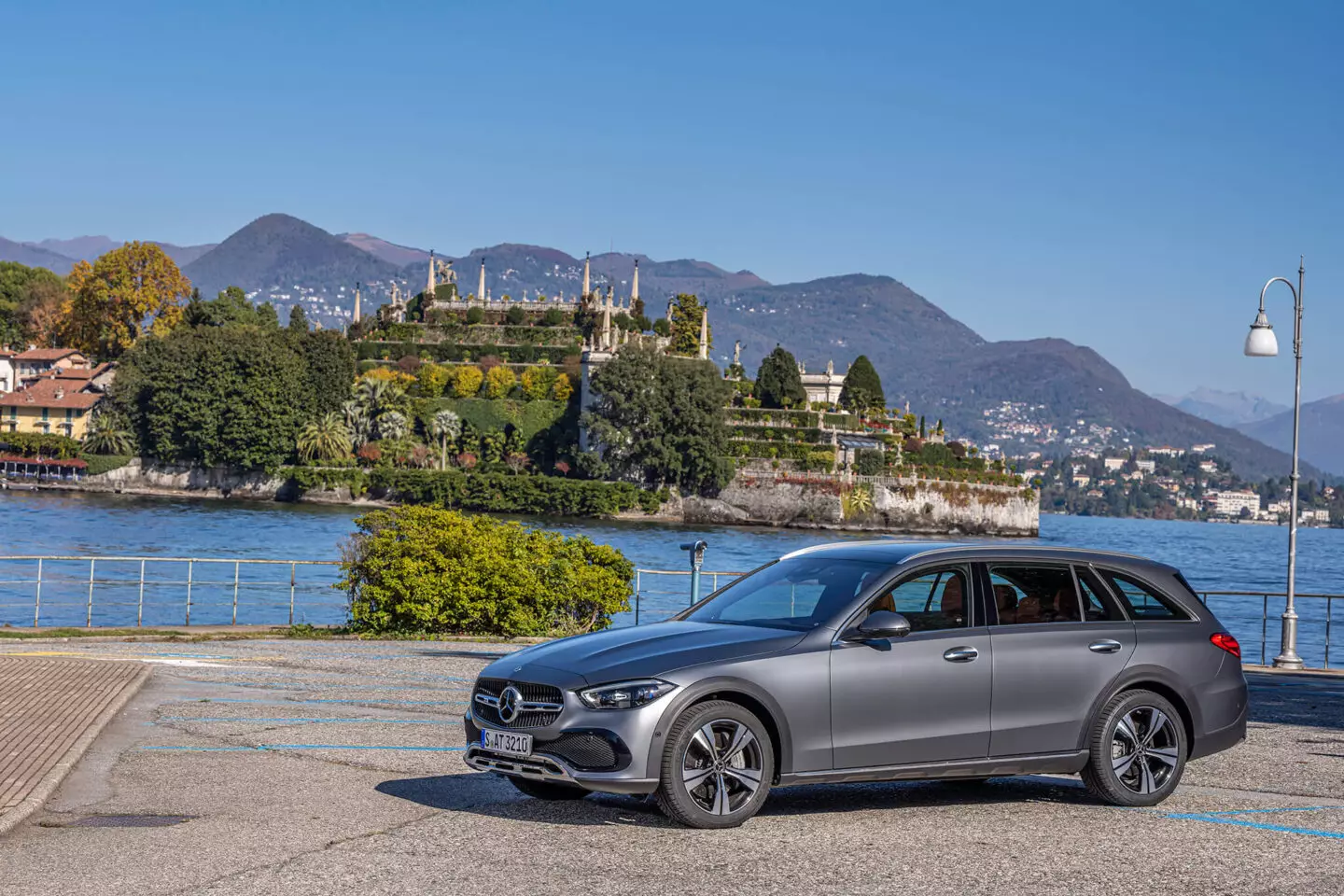
And finally, assuming itself as a direct competitor to the Audi A4 Allroad and Volvo V60 Cross Country vans — which we compared in the past — which have been here for some time with precisely this philosophy.
What distinguishes the All-Terrain C-Class?
Visually, in addition to greater ground clearance and larger wheels, we have such plastic and metal protections all around the body, metalized plates at the front and rear, a specially designed radiator grille (only with a crossbar) and, of course, the visual effect caused by the fact that it is a C van “on ends”.
Optionally, a tow bar can be fitted, which automatically locks into position to hitch a towable vehicle (up to 1800 kg) when a button installed in the luggage compartment is pressed.
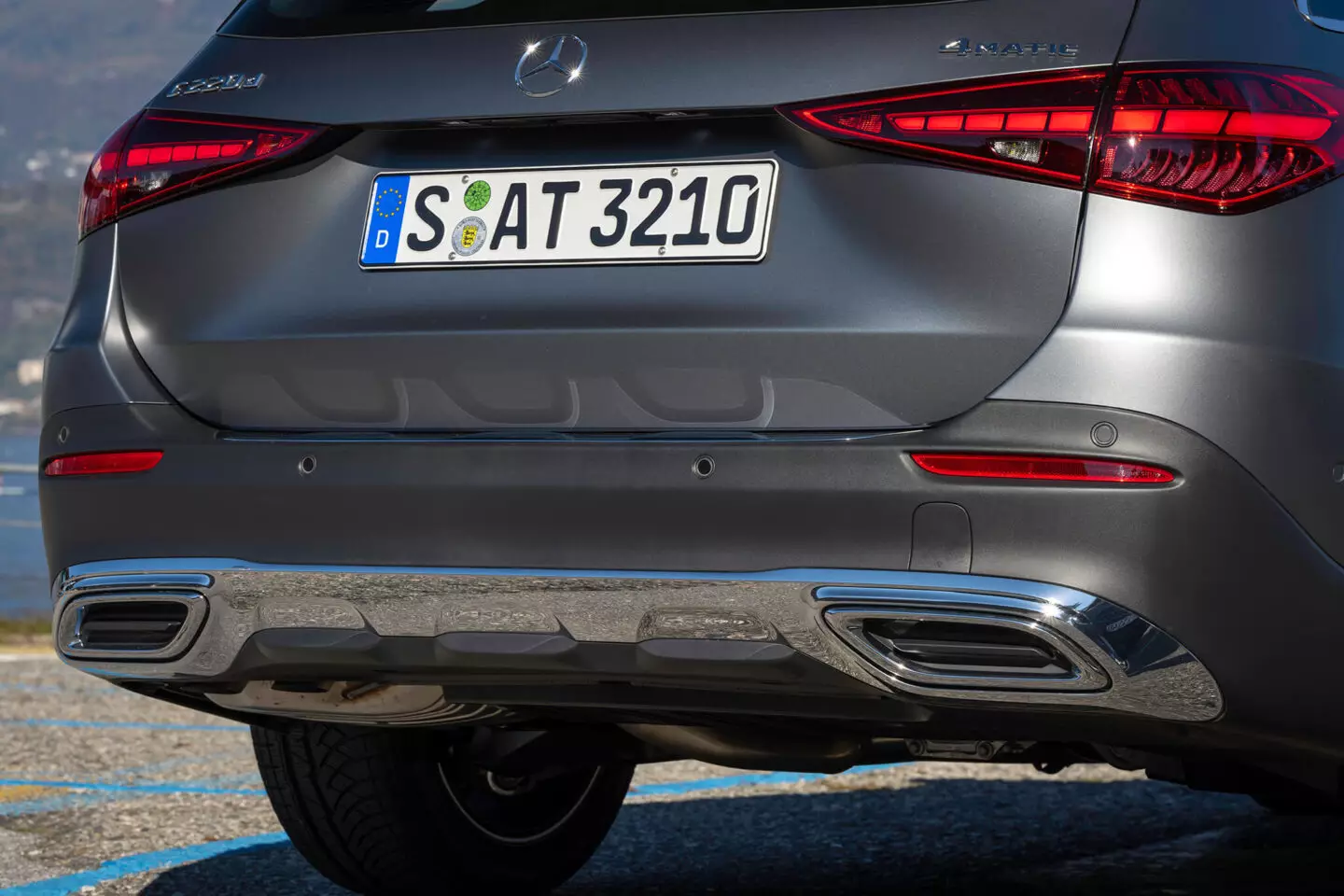
Inside, the differences are even more discreet for the other C Station Class (part of the Avantgarde equipment level both outside and inside), with three chromatic environments to choose from (black, beige or black/brown). The MBUX system now has a specific menu with off-road information: lateral and longitudinal inclination of the body, the orientation of the front wheels, in addition to a digital compass (so we don't lose north) and 360º cameras.
The usual driving modes (Eco, Comfort, Sport and Individual) are joined by two others, related to the added valences of driving in the All-Terrain C-Class: Off-road (limited to 110 km/h) and Off-road+ ( 45 km/h and with the slope descent control system always active “behind the scenes”).
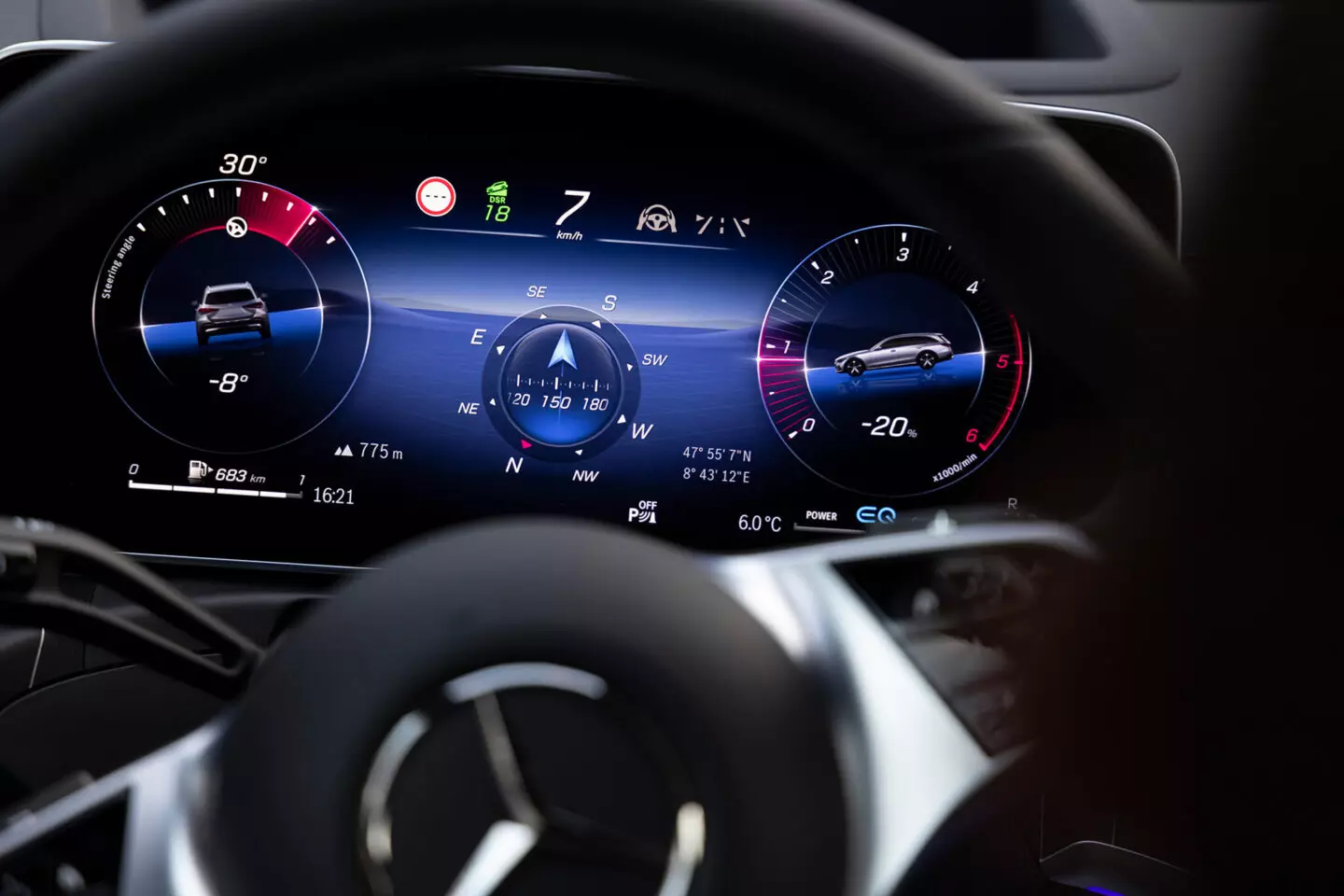
Reference is also made to the possibility of equipping the All-Terrain C with the advanced Digital Light lighting system debuted in the new S-Class, which widens and improves light projection at speeds of up to 50 km/h.
Only one engine available for Portugal
In this first opportunity to drive the new All-Terrain C-Class were the two engines that will be available: 200 and 220 d. The first is petrol and the second is diesel, both with four cylinders, with light hybridization and a nine-speed automatic transmission. Considering that only the C Station 220 d 4MATIC All-Terrain (under its full name) will be sold in Portugal, there were not many doubts about which should be chosen.
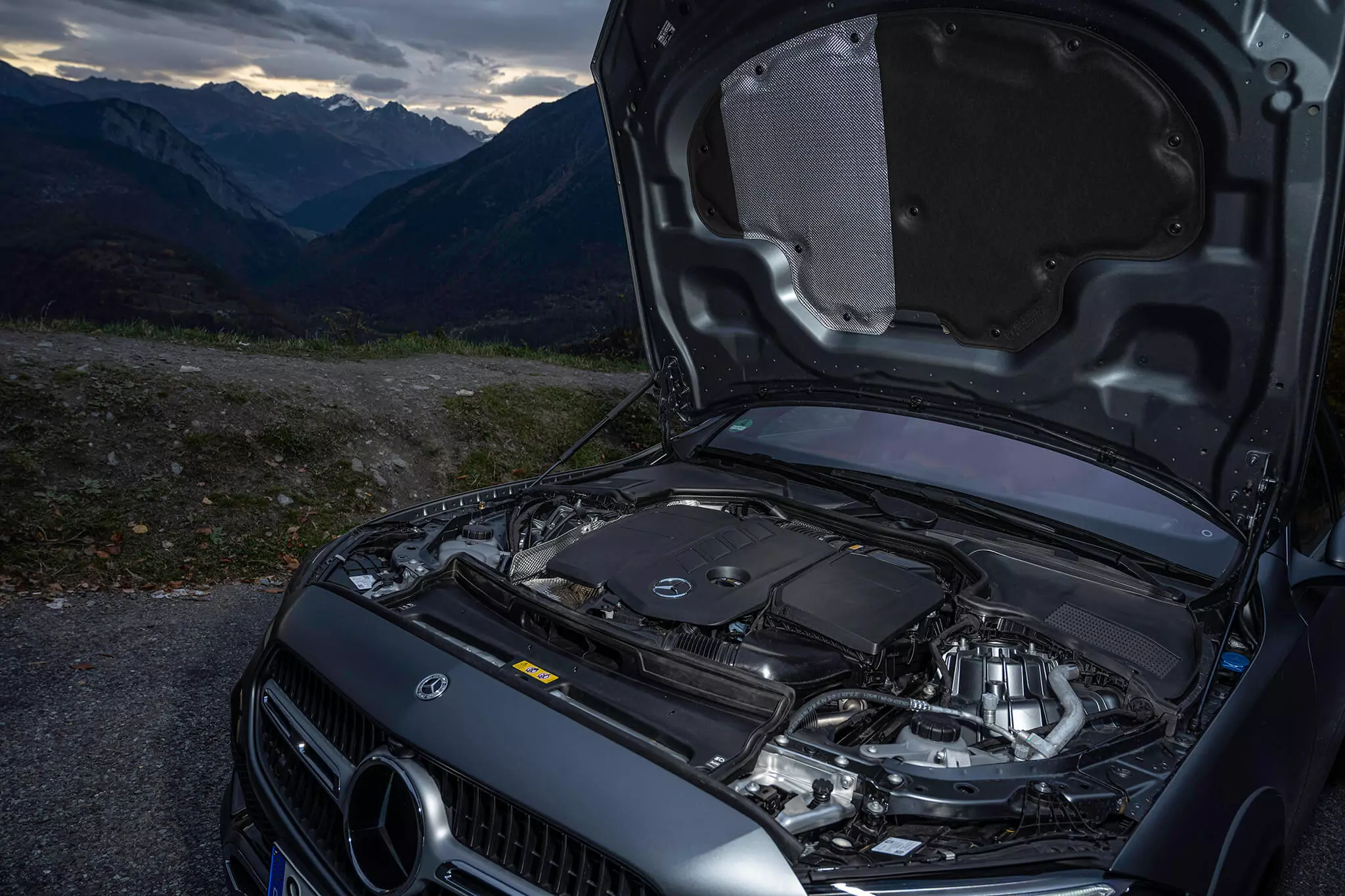
The mild hybrid system (mild-hybrid) has a starter/generator (ISG) and 48 V electrical system, to assist the combustion engine with 22 hp and 200 Nm in situations of intermediate and strong acceleration, to lower consumption and improve performance while allowing energy to be recovered.
Spacious q.b.
Materials and finishes are generally of good standard, as is the space: very ample in length also in the second row, as well as in height, although the guided unit has a panoramic roof (which always steals a few centimeters in height) along its entire length of the cabin.
Of course, the huge tunnel on the second row floor will (a lot) annoy a possible occupant of the central seat. If possible, it is best to travel two in the rear in comfort, enjoy the central armrest and seats higher than the front to improve the view to the outside.
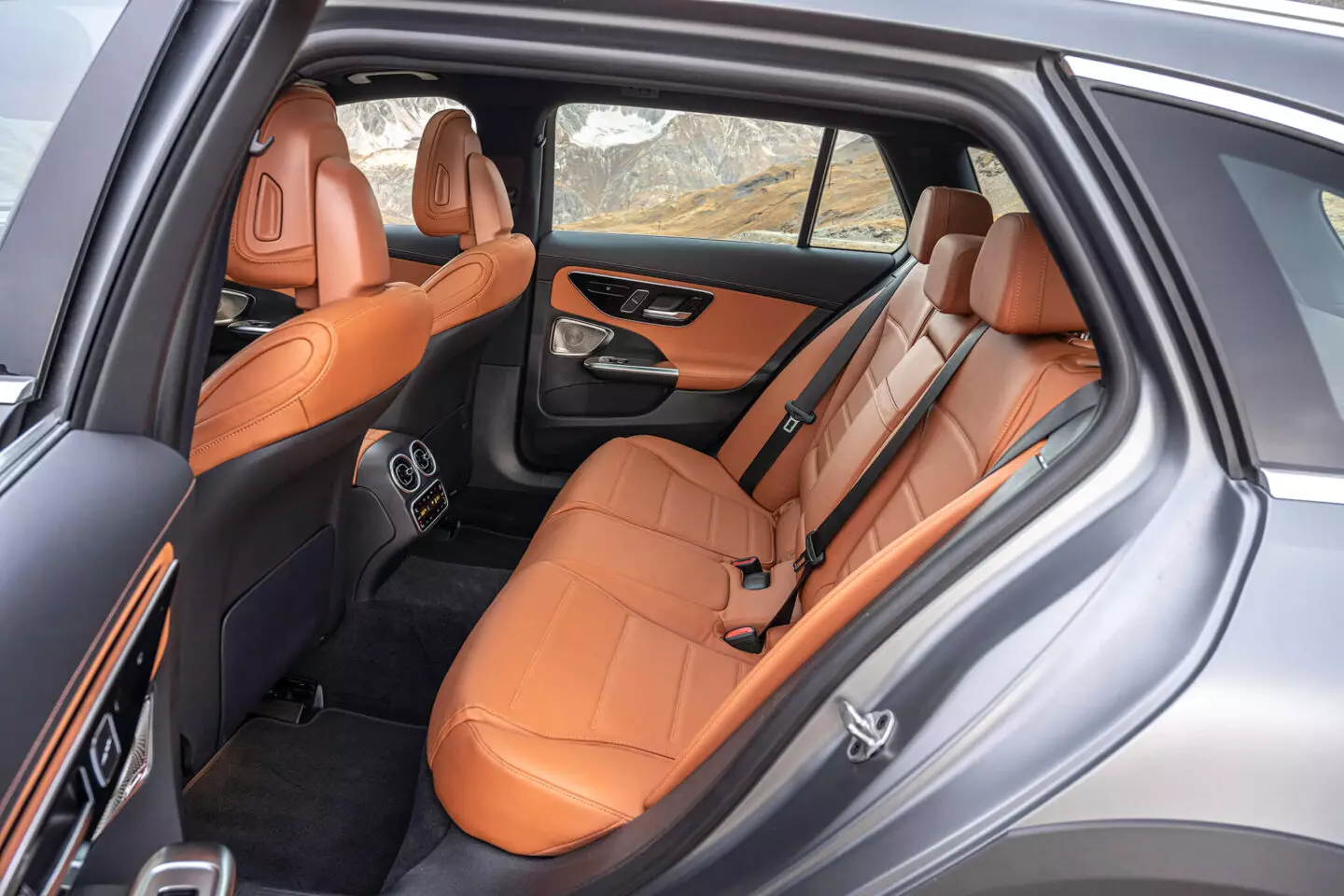
The trunk has very usable shapes, with a rigid and well-coated coat rack, despite being smaller than that of the Audi A4 Allroad and Volvo V60 Country, it has a height-adjustable floor platform, which allows you to create a flat bottom. will of the user. We also have buttons on the back here that let you fold the rear seat backs 1/3-2/3.
Convincing off-road skills
The comfort is impressive no matter what type of surface it is (no excessive side-rolling in curves), because the German engineers started with the Comfort tuning base of the “normal” van, as Christof Kuehner, development director, explains to me: “we understand that it would not be necessary to include the variable electronic damping option as it would only add complexity and cost, without much benefit”.
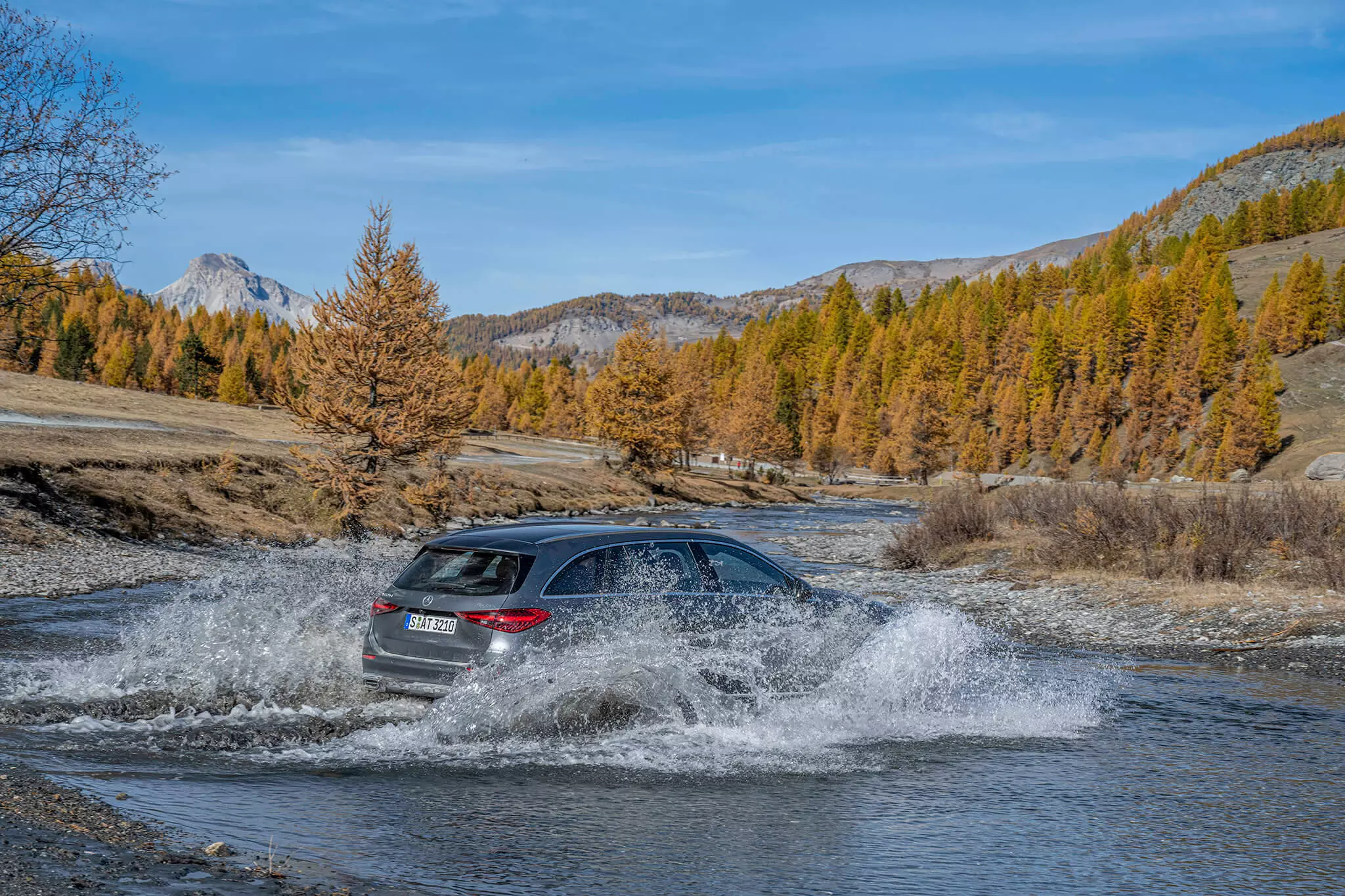
The steering is precise enough and the driving modes result in more or less felt variations in the way the van treads on the road. As usual in hybrids (albeit mild-hybrid) from Mercedes-Benz, the brake pedal starts with little action in the initial phase of the course, «biting» in a more felt way from 30% of it onwards.
The test included a moderate all-terrain trail, but which will already be more demanding than most C-Class All-Terrain owners will subject their van worth more than 60,000 euros.
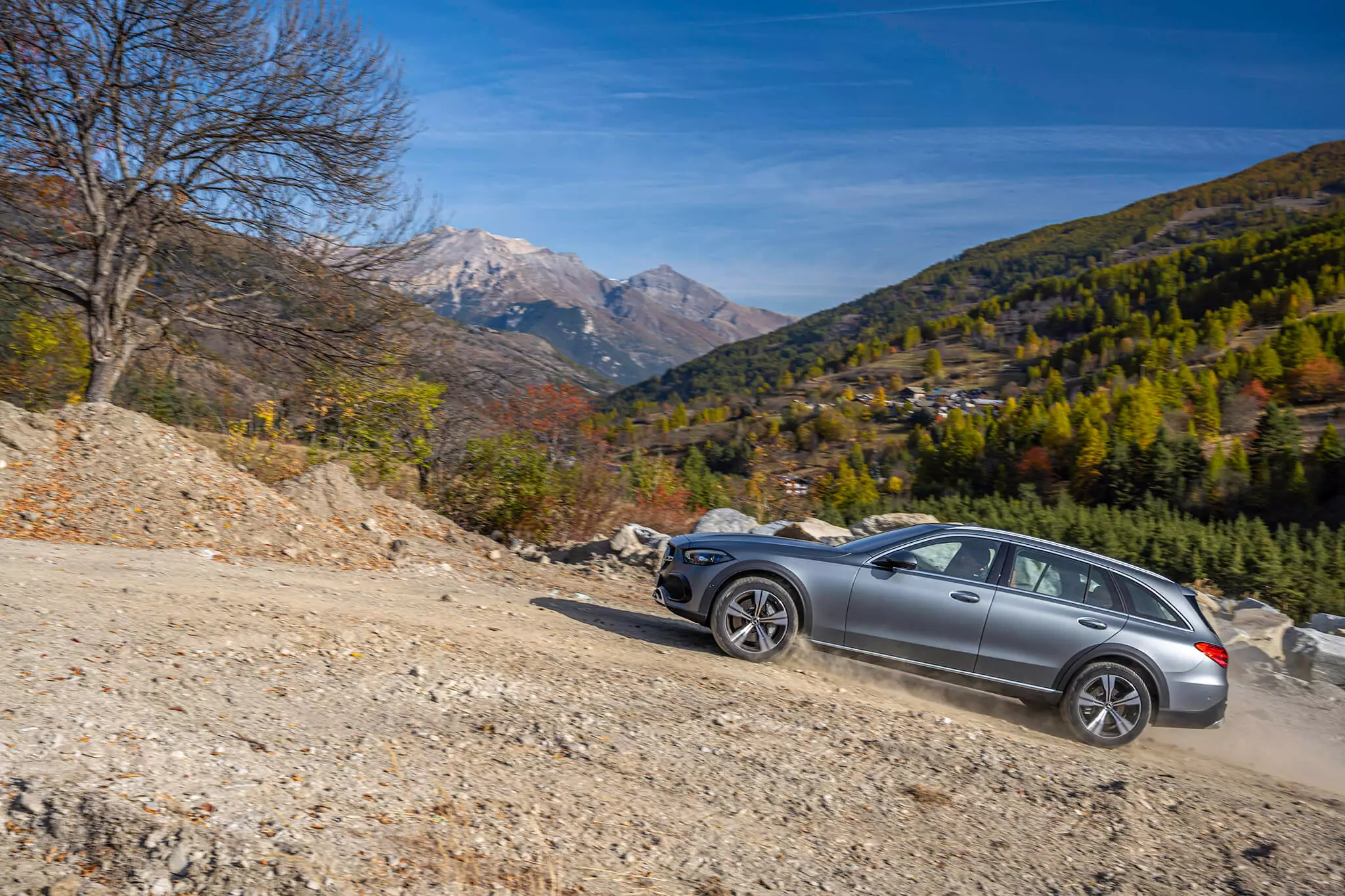
Who, of course, went through this specific test without even "getting tousled". Muddy and slippery terrain, and steep earthen and rock ramps were left behind without hesitation and the speed control on slopes works very well, which works between 3 km/h and 16 km/h, defining the same in a button on the left side of the steering wheel and then always being memorized. This speed is ignored when the driver steps on the accelerator or brake past this pre-set limit, which returns to being active when the pedals are released.
Faster than expected
The engine fires more vigorously from 1750 rpm, not only because the 440 Nm of maximum torque is all there, reached at 1800 rpm, but also because the electric motor gives a help of 200 Nm which, more than the 20 hp Additional electrics are very useful in speed recovery and acceleration in general.
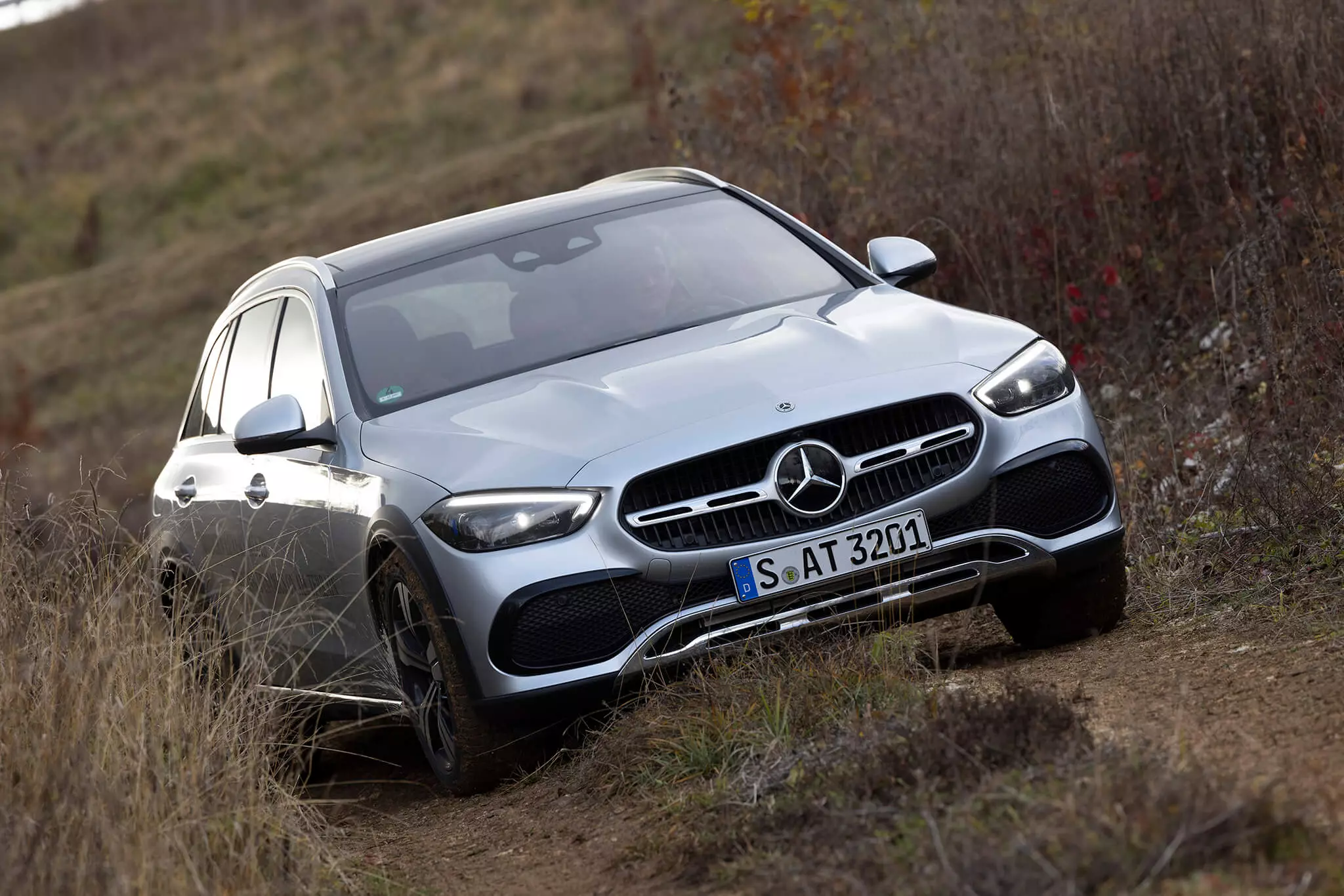
And that makes the All-Terrain 220 d C-Class faster than you'd expect from a model weighing nearly 1900 kg and maxing out 200 hp. The operation of the gearbox also gains (smoothly) with this electric “push” in the gear changes, which can be done manually through the paddles behind the steering wheel. One fix, however: they should be more “premium”, with a more pleasant material to the touch and a less “clunk” activation mechanism.
At the end of the road, of about 60 km, the average consumption was 7.6 l/100 km, about 2 l/100 km more than the homologated value, but part of this worsening is also due to the fact of the test having been partially carried out on German motorways with zones with no speed limits.
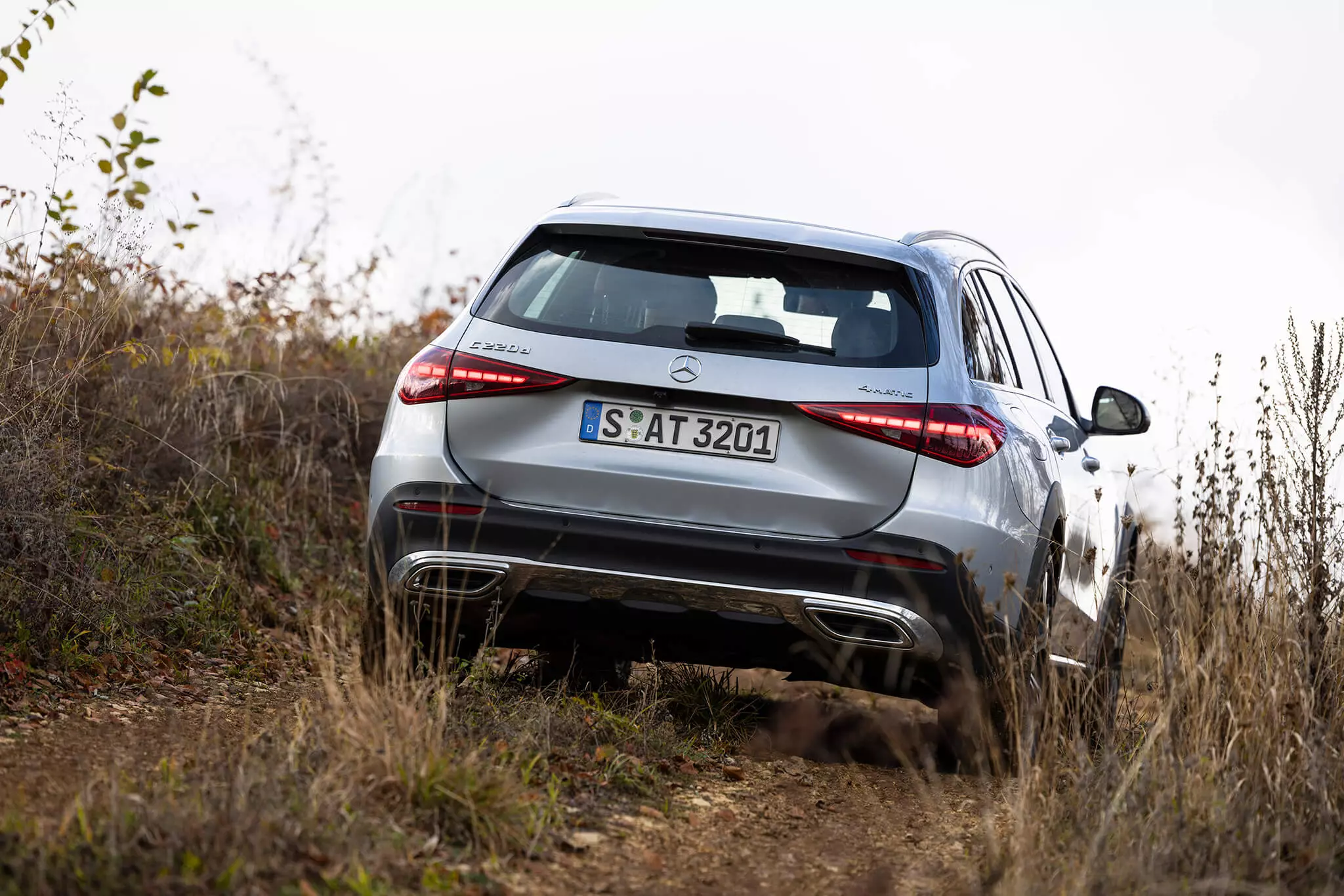
How much does it cost?
The Mercedes-Benz C Station 220 d 4MATIC All-Terrain costs 6300 euros more than the "normal" C Station with this same engine, which seems like a high differential, being also slightly above what the two direct rivals of Audi cost and Volvo (which have prices around 59,300 euros).
But for those who give priority to the TT attributes of this van and can give up some space, it is still 9000 euros less than the E All-Terrain with the same engine...
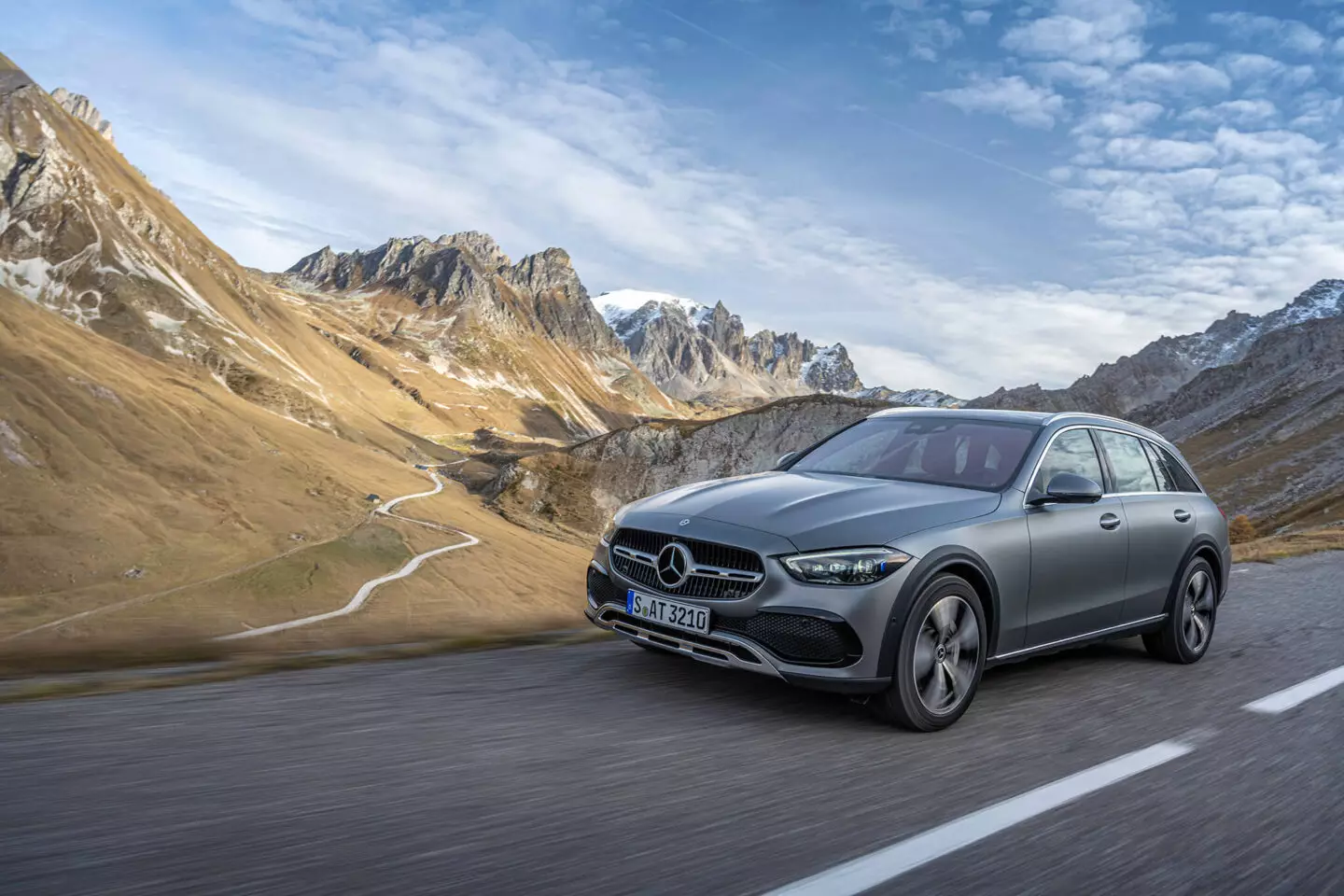
Technical specifications
| Mercedes-Benz C Station 220 d 4MATIC All-Terrain | |
|---|---|
| Motor | |
| Position | longitudinal front |
| Architecture | 4 cylinders in line |
| Capacity | 1993 cm3 |
| Distribution | 4 valve per cylinder (16 valve) |
| Food | Injury direct, variable geometry turbo, intercooler |
| power | 200 hp at 3600 rpm |
| Binary | 440 Nm between 1800-2800 rpm |
| electric motor | |
| power | 20 hp |
| Binary | 200 Nm |
| Streaming | |
| Traction | 4 wheels |
| Gear box | 9-speed automatic (torque converter) |
| Chassis | |
| Suspension | FR: Independent multiarm; TR: Independent multiarm; |
| brakes | FR: Ventilated discs; TR: Ventilated Discs; |
| Turning direction/diameter | Electro-hydraulic assistance / 11.5 m |
| Dimensions and Capabilities | |
| Comp. x Width x Alt. | 4755mm x 1841mm x 1494mm |
| Length between the axis | 2865 mm |
| Luggage capacity | 490-1510 l |
| warehouse capacity | 40 l |
| Wheels | 245/45 R18 |
| Weight | 1875 kg (US) |
| Provisions and consumption | |
| Maximum speed | 231 km/h |
| 0-100 km/h | 7.8s |
| Combined consumption | 5.6-4.9 l/100 km |
| CO2 emissions | 147-129 g/km |
